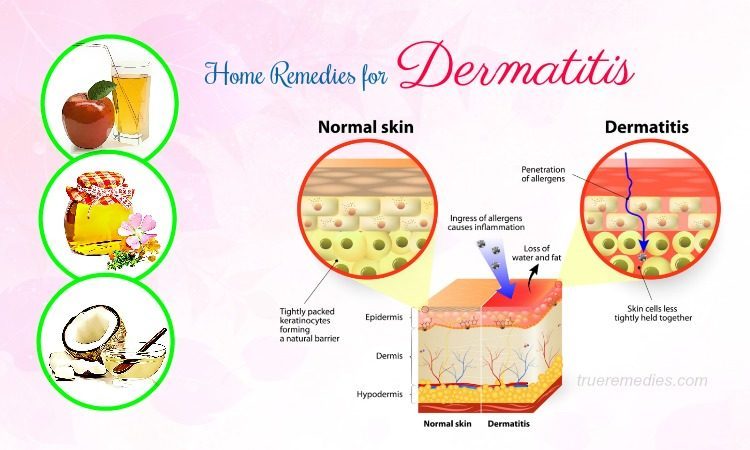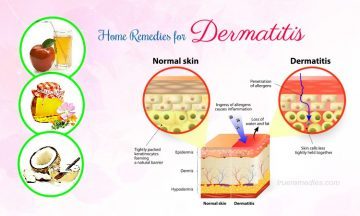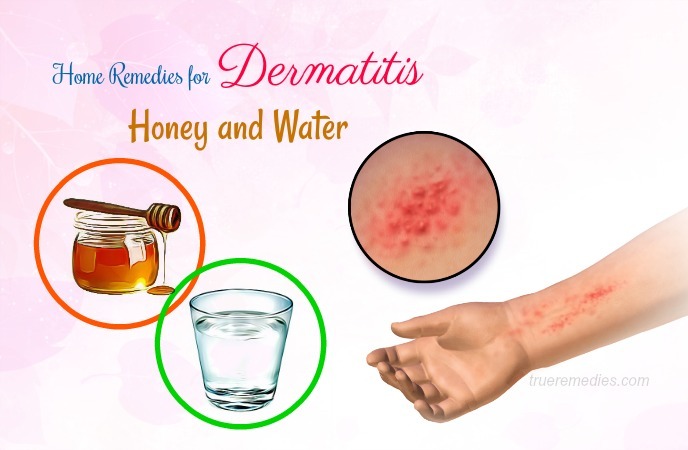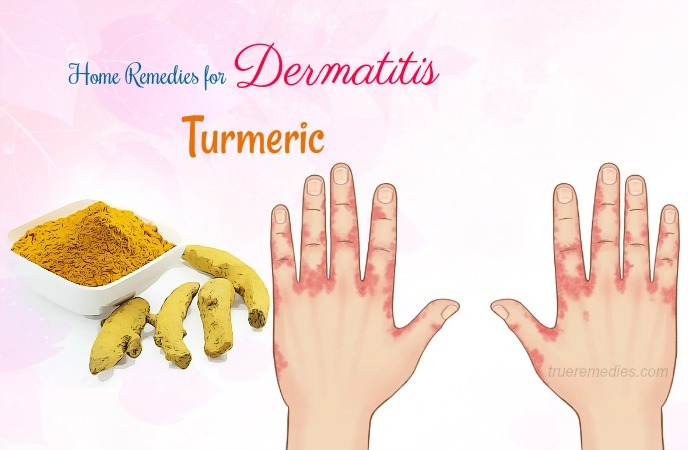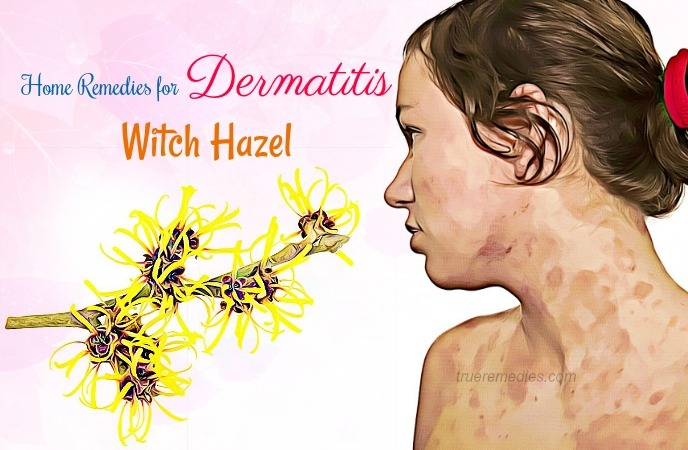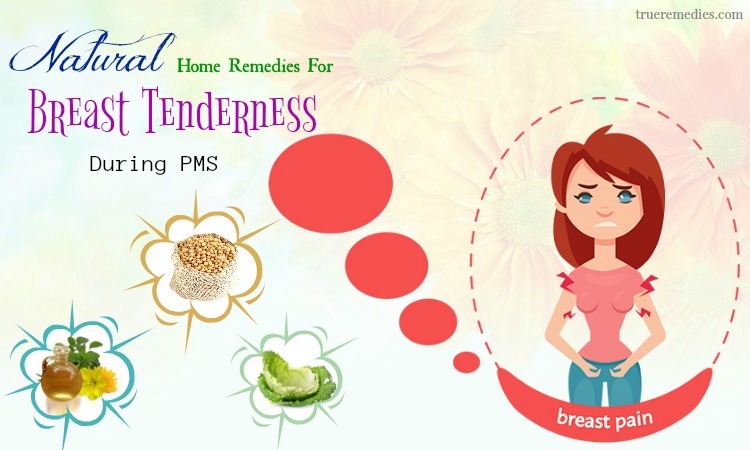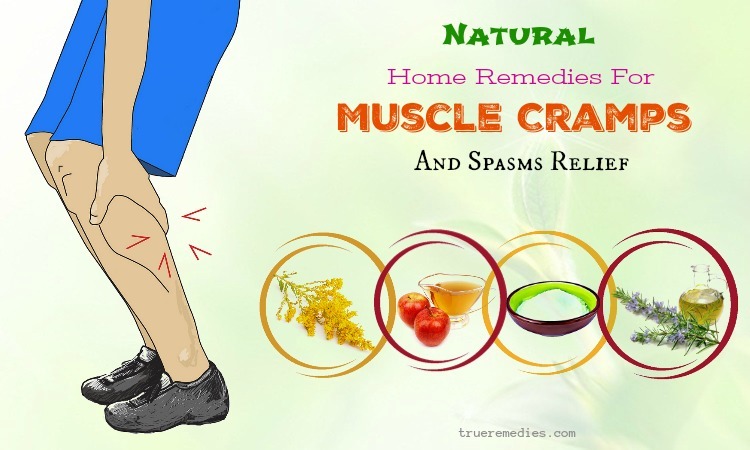updated: 11/13/2019
CONTENTS
Patients with dermatitis have still used traditional remedies to treat it at home, which brings fast results if you know how to apply them properly. These remedies use natural ingredients, so they are very safe and cheap. Only with the ingredients available in the garden and kitchen, you can relieve your affected skin quickly. This article from TrueRemedies.com will show you how to get rid of dermatitis symptoms naturally by introducing to you natural home remedies for dermatitis symptom relief. Nonetheless, you should figure out some basics about this disease before seeking effective remedies for the skin issue. Take a look!
- 22 Natural Home Remedies For Dry Skin On Face And Body
- 17 Effective Home Remedies For Skin Allergy Itching Relief
- 25 Home Remedies For Psoriasis On Face, Hands, Legs And Scalp
What Is Dermatitis?
Dermatitis describes the inflammation of the human skin. It happens in different forms and often involves an itchy rash on red, swollen skin[1] [2]. The skin impacted by dermatitis might ooze, blister, flake off or develop a crust. Dermatitis is common but not contagious. It could make you feel self-conscious and uncomfortable. Self-care routines, combined with medications, will help you treat this condition. There are a few types of dermatitis, which are stasis dermatitis, allergic contact dermatitis, atopic dermatitis, irritant contact dermatitis, neurodermatitis, perioral dermatitis, and seborrheic dermatitis
What Are Symptoms Of Dermatitis?
Each kind of dermatitis might look different and tends to happen in different body parts such as neck, wrist, thigh, forearm, or ankle.
TrueRemedies Partner Solutions

Need a Help from the Leading Expert Online, Available 24/7?
They’re all here and ready to answer your questions online or by phone. Keep asking questions until you get the answer you need.
- Atopic dermatitis: Also called eczema, this type of dermatitis often starts in infants. It is red and itchy, and most commonly happens in skin folds, behind knees, inside elbows, and the front area of the neck. When scratching, the skin rash may leak fluid and then crust over.
- Contact dermatitis: It happens on the skin area, which contacts with substances irritating the skin or causing an allergic reaction, such as soap, poison ivy, and essential oils. The affected skin may sting, burn, or itch. Also, blisters may develop.
- Seborrheic dermatitis: This condition leads to scaly skin patches, red skin, and flakes. It often impacts the oily skin areas, such as the upper chest, face, and back. It could be a long-term problem with periods of flare-ups and improvement. Popularly, this disorder is called a cradle cap in infants.
What Are Causes Of Dermatitis?
A number of allergies, health condition, genetic factors, and irritants may result in different kinds of dermatitis.
- Atopic dermatitis: This type of dermatitis is related to a combination of some factors, including genes, dry skin, a weakened immune system, bacteria, and environmental conditions.
- Contact dermatitis: This condition results from direct contact with one of the allergens and irritants, such as poison ivy, cleaning products, jewelry having nickel, perfumes, preservatives in lotions and creams, and cosmetics.
- Seborrheic dermatitis: This condition is caused by a fungus (yeast) that situates in the oil secretion on the skin. The flare-ups of this type rely on the season.
What Are Risk Factors?
When it comes to what triggers dermatitis, there are some factors which may increase your potential risk of developing certain kinds of dermatitis.
- Age: Dermatitis may occur in people of all ages, but atopic dermatitis (eczema) often starts in infants.
- Asthma and allergies: People having genes of eczema, hay fever, allergies, or asthma seem to be prone to develop atopic dermatitis.
- Occupation: If you have to come in contact with some cleaning supplies, metals, or solvents, you may be in a high risk of contact dermatitis. Health-care workers are also prone to hand eczema.
- Health conditions: You might be likely to get seborrheic dermatitis once you have conditions such as Parkinson’s diseases, HIV, and congestive heart failure.
When To See A Doctor?
You had better see your doctor if:
- The rash makes you uncomfortable, which leads to losing sleep or being distracted from daily activities.
- Your skin gets painful
- Your skin is infected
- You have tried all self-care steps without any improvements.
Top 23 Natural Home Remedies For Dermatitis Symptom Relief
1. Acacia Arabica
This is one of the ancient Indian systems of medicine (Ayurveda) that you should try at home[1]. Also called an Indian Arabic tree, this tree is especially useful in curing dermatitis[2]. Boil a small amount of Acacia Arabica in plain water, and then allow the vapors to contact with your affected area. Next, use clarified butter to apply it to this area.
2. Honey And Water
When it comes to home remedies for dermatitis, one of the natural treatments is the combination of honey and water. Honey works well because it is an antibacterial and antifungal agent that helps kill microbes causing seborrheic dermatitis and dandruff in the first stage[3] [4] [5] [6]. Moreover, honey draws the moisture into your skin and locks it inside, thereby helping your skin become supple.
Directions:
- Dilute 4 parts of honey in 1 part of boiled water.
- Then, apply it to your affected area and leave it there for 3 hours or more
- Wash it off thoroughly
Typically, this condition will be improved after the first use. Then, after three consecutive uses, your skin will look healthier again.
3. Coconut Oil
Coconut oil is a popular treatment for different skin issues, including dermatitis[7] [8]. Coconut oil can loosen scales due to seborrheic dermatitis and combat the skin fungus causing it[9]. This oil has a potent antifungal property thanks to the unique fatty acids, including lauric acid and caprylic acid, which helps to stop dermatitis symptoms[10].
Directions:
- Take ½ teaspoon of coconut oil to apply it to your affected skin
- Rub and massage for a few minutes to let it absorb the skin pores
- After applying, wrap your affected area with a bandage and rinse it off after 30 minutes
However, some people said that this oil works marvelously, while others do not realize noticeable results when using it.
4. Apple Cider Vinegar
This popular seborrheic dermatitis treatment has a long history in skin care treatment. Being a powerhouse of many beneficial properties for skin, apple cider vinegar has strong acidity due to malic acid, which may help treat seborrheic dermatitis triggered by skin fungus and restore the natural acidic environment of the skin. Researchers say that skin pH levels play an important role in the breakdown of the protective barrier of the skin[11].
According to a study in 2016 in mice, using a vinegar-based cream helps to maintain skin pH levels and reduce the development of eczema[12]. However, researchers have yet investigated these effects in humans.
Directions:
- Combine apple cider vinegar with water (either bottled or boiled) at a ratio of 1:1.
- Apply it to your affected area
- Have a shower after 10-15 minutes
In case your skin is damaged badly, you may feel a stinging sensation. Then, it is recommended to apply a solution of vinegar and water at a ratio of 3:2.
To promote your healing process, use apple cider vinegar both internally and externally. A lot of dermatitis patients confirm its benefits when consuming it daily on an empty stomach or with food.
5. Baking Soda
Having a long history of fighting fungus, baking soda is worth mentioning in this list of home remedies for dermatitis. Baking soda, in fact, works in the opposite manner of apple cider vinegar. The vinegar helps to combat the fungus thanks to its acidity, while baking soda does that due to its the alkalinity. In theory, the fungus will rapidly die when the environment is highly alkaline; this is what baking soda does[13] [14].
Directions:
- Mix ½ teaspoon of baking soda with ½ cup of water
- Apply the solution to your affected skin for 5-10 minutes
- After that, wash it off with cool water
It is said that baking soda brings the fastest results among the options mentioned above. After the first use, the skin will calm down, and redness will also go away. The flakes and scales also instantly disappear. Nonetheless, the skin may get dry, and sometimes dermatitis comes back.
6. Tea Tree Oil
Tea tree oil is one of the best home remedies for dermatitis you should not skip. Tea tree oil contains potent anti-inflammatory, antimicrobial, antifungal, antibacterial, antiseptic, and antioxidant properties that may ease symptoms and severity of dermatitis flare-ups[15] [16]. They help alleviate irritation and itching, fight infection-causing bacteria, prevent infection from spreading, soothe the skin, and protect skin from free radicals .
In addition to treating dermatitis, tea tree oil is also beneficial in curing dandruff[17], reducing bacteria in the skin and mouth, treating athlete’s foot, treating acne, and curing minor skin wounds and irritations.
Actually, tea tree oil has been proven to be the best essential oil for dermatitis[18] [19]. Before treating your skin issue with tea tree oil, it is necessary to take time to do it properly to get the best results. First of all, you need to choose high-quality oil. High-quality oils will be less likely to be contaminated by different ingredients. Choose 100% pure organic oil. If possible, choose the one with a reputable brand.
Also, do not apply undiluted tea tree oil to your skin because it makes the skin get dry. Undiluted tea tree oil is potent, which may make your condition worse. You should mix it with a favorite carrier oil, such as olive, sunflower, coconut, jojoba, avocado, or almond oil.
Then, before applying it all over your affected skin areas, you need to do a patch test to avoid side reactions. Dilute 1-2 drops of tea tree oil with 12 drops of carrier oil.
Method 1: Tea tree oil
- Put 20 drops of tea tree oil in ½ cup of coconut oil
- Apply the solution to your affected areas twice per day
- Keep the remaining solution in an airtight container and store it in the fridge
Method 2: Tea tree oil bath
- Mix 15 drops of tea tree oil with 2 tablespoons of extra virgin olive oil
- Pour it in your bathwater and soak your body into this solution for 20 minutes
- Repeat this routine twice per day
Or, you could use almond oil or lavender oil to alternate for extra virgin olive oil.
Method 3: Tea tree oil and moisturizer
- Add several drops of tea tree oil to your favorite moisturizer
- Mix well and apply it to your skin thrice per day
In addition to the above ingredients, you can also combine tea tree oil with oatmeal or Vaseline for similar effects.
Notes:
- In general, tea tree oil is safe to use, but if undiluted, it may cause minor inflammation and irritation.
- Do not ingest tea tree oil because it is toxic and may lead to drowsiness, diarrhea, confusion, and rashes.
- Avoid tea tree oil if you are getting pregnant or nursing
- Avoid having a shower for long and dishwashing, swimming, and hand washing frequently
7. Horse Chestnut
This is considered an effective option among home remedies for dermatitis symptoms. In addition to treating dermatitis, it is also used to treat other conditions such as varicose veins, leg ulcers, and venous insufficiency[20].
The active ingredients in horse chestnut are saponins, tannins, and proanthocyanidins. This plant helps to treat dermatitis because it may tighten veins and tone blood vessels, thereby relieving dermatitis symptoms. But, you should use herbal preparations from the reputed companies because raw horse chestnut seeds could be toxic in nature, once ingested orally.
8. Aloe Vera
Aloe vera has long been used since 1750 B.C for the embalming and medicinal purposes. According to a study published in “Journal of Dermatological Treatment,” people who used aloe vera experienced 58% improvement of symptoms of dermatitis than those who used a placebo and just experienced 15% improvement. The anti-inflammatory properties of aloe vera will help stop any secondary infections that might prevent or slow down the healing process. Also, aloe vera also increases the rate of skin cell division, and any wounds and cuts will be healed faster[21]. Aloe vera is one of the effective treatments for atopic dermatitis that you can apply at home[22] [23] [24].
Experts recommend using aloe vera topically directly to the affected areas. Then, rinse it off after 10-15 minutes to see good results. Also, you can drink several ounces of aloe vera juice to enjoy glowing and healthy skin.
9. Cold Compress
The next suggestion in regard to home remedies for dermatitis is cold compress, which is considered a highly effective treatment for dermatitis. It is recommended for dermatitis symptoms on the face. Using cold compress will decrease inflammation accompanied by dermatitis[25]. You could apply a cold compress 3-4 times per day for treating dermatitis efficiently.
10. Garlic
Some people say that using garlic directly on the skin is too strong. But, if using properly, it is one of the effective home remedies for dermatitis, particularly seborrheic dermatitis[26] [27]. Garlic has an active chemical compound called allicin, which is strong antifungal and antibiotic properties[28] [29].
You are recommended to consume garlic in the raw form because cooking garlic may damage the active ingredient. Garlic has to be chopped into pieces, which have to be eaten after about 5 to 10 minutes, for treating dermatitis.
Garlic, on the other hand, is also used to treat atopic dermatitis, which is also referred to as eczema.
- Take the juice from garlic (7-8 cloves)
- Dilute the juice of garlic with the same amount of water
- After warming the diluted solution, apply it to your affected skin area and leave it overnight
- Rinse it off in the next morning
11. Turmeric
This is a highly effective, natural solution among home remedies for dermatitis. Being a popular spice, turmeric has been utilized in China and India thanks to its flavor and health benefits. This treatment has been used for treating illnesses such as cancer, heart disease, digestive illnesses, and skin conditions. The major reason behind its effectiveness is an active ingredient called curcumin, which has strong anti-inflammatory, antifungal, and antibacterial properties[30] [31] [32]. In accordance with studies, turmeric may decrease scaliness and inflammation of the skin[33]. These properties help combat candida yeast infection, which is responsible for the condition[34] [35].
To treat dermatitis, you can consume 3-4 grams of turmeric daily. Avoid exceeding 8 grams of turmeric each day because it may result in stomach problems. In general, consuming turmeric does not come with negative effects on your health, but consult your doctor before taking any medications prior to using this natural treatment.
12. St. John’s Wort
For thousands of years, St. John’s Wort has been utilized by herbalists for treating some health conditions, including dermatitis[36] [37]. Although this herb is mainly used for dealing with depression[38] [39], many studies showed that it is also good at treating dermatitis symptoms, especially atopic dermatitis.
But, it also triggers some ill effects such as diarrhea, headache, and nausea. St. John’s Wort has pain relieving and anti-inflammatory properties. In most cases, St. John’s Wort is taken by mouth, and sometimes, the side effects of using it directly on the skin are found. Thus, if you want to use it to treat dermatitis, have the supervision of a health care practitioner.
13. Chamomile
This plant has a variety of different flavonoids and terpenoids that have positive effects on treating dermatitis[40] [41].
You can use chamomile to treat dermatitis as a poultice or use commercial creams or lotions containing it.
- Take a tablespoon of the dried form of this herb and add it to a cup of boiling water.
- Leave it there for 15 minutes, strain it, and let it cool down to the room temperature.
- Dip a clean cotton ball into the solution and apply it to your affected areas
- Wait for 20-30 minutes before repeating it
- Do this method 3 times per day to get good results
Note:
- It has been reported that products having chamomile extracts may result in skin rashes.
- People who are allergic to sunflowers, echinacea, marigolds, sagebrush, tansy, mugwort, feverfew, birch pollen, or celery, should be cautious with the use of chamomile.
- Pregnant or breastfeeding women should also avoid this herb.
14. Chickweed
This plant has been commonly used by Chinese folk for more than 200 years because of its anti-inflammatory properties[42] [43]. The modern herbalists majorly prescribe it for skin conditions.
Despite being taken by mouth in the form of capsules, tincture, or raw herb, it is also used in the form of creams to reduce inflammation and itching.
It is recommended drinking the tea 3 times a day or 1.5 ml of a tincture of chickweed.
However, chickweed is shown to be associated with extensive contact dermatitis symptoms in people who are allergic to the daisy family. Do not consume orally or use it externally if you are pregnant or nursing.
Chickweed has chemicals called nitrates that may cause some symptoms of nitrate poisoning, such as fainting, weakness, dizziness, and bluish fingers (peripheral cyanosis) or lip cyanosis. If you experience any of the nitrate poisoning symptoms after using this herb, contact a doctor instantly.
15. Marigold
With anti-inflammatory and antiseptic properties, marigold is an ingredient commonly used for soothing skin irritation associated with dermatitis and other skin issues[44] [45]. Marigold is available in most stores of natural health foods, commonly in ointment and cream forms. Furthermore, this herb could also be found in the form of dried or fresh marigold, extracts, and tinctures.
- Make marigold tea and immerse a clean cloth into the cooled marigold tea.
- Then, apply it to your affected area for 15-20 minutes.
- Follow the method 3 times per day for 10 days.
Note:
- People who are allergic to the pollen of plants in the daisy family should avoid using this herb.
- Sometimes, menstrual cycles could be disrupted by marigold.
- Avoid this plant if you are getting pregnant or nursing.
16. Licorice
This is the most commonly used herb in traditional Chinese medicine[46], which has been used for hundreds of years to treat skin illnesses, including dermatitis[47]. Among home remedies for dermatitis symptoms, it is recommended to make use of this plant for safe relief due to its anti-inflammatory properties[48]. Licorice may reduce skin redness, itching, and swelling naturally.
However, sometimes, it is shown that overusing licorice may be associated with increased blood pressure. Thus, it is best to consult your doctor before using this herb.
17. Witch Hazel
You can use witch hazel to relieve itching sensations associated with dermatitis[49]. The high content of tannins in this herb has astringent properties that are good for the process of treating dermatitis[50]. You can use witch hazel in the cream or liquid form. Or, you can make a herbal extract (decoction) with this herb to treat dermatitis.
Directions:
- Boil a cup of water and add 1 teaspoon of powdered leaves/twigs to it
- Leave it there for 10 minutes, strain, and allow it to cool down
Or, you could also apply it directly to your affected skin area or mix it with a homemade lotion.
Note: Despite very rare, this herb may cause some allergic reactions. You should seek instant medical attention if you notice symptoms such as itching sensations and swelling in the throat, tongue, or face, rash, severe dizziness, and difficulty breathing.
18. Oatmeal
Oatmeal has been commonly used for soothing itching and irritation caused by dermatitis[51] [52]. This herb has compounds called avenanthramides that have anti-inflammatory agents[53], and it also exhibits an antioxidant property. Using oats may reduce skin redness, scaliness, dryness, and erythema.
Directions:
- Mix 1 cup of finely powdered oatmeal in tepid bath water
- Soak yourself in this solution for 15-20 minutes every day
- Repeat this routine every day for about 1 month
19. Marshmallow
This is a traditional and folk treatment among remedies for dermatitis. The anti-inflammatory properties of marshmallow root help relieve skin irritation related to eczema, dermatitis, and furunculosis.
According to a 2013 review, using an ointment having 20 percent the extract of marshmallow root reduces skin irritation[45]. Researchers also suggested that this herb may stimulate certain cells that offer anti-inflammatory effect.
Directions:
- Apply an ointment having 20 % marshmallow root extract to your affected area
- Follow the method 3 times per day.
20. Neem
Neem leaves, aka Indian Lilac, could be used to deal with the problem of dermatitis[54]. It may restore the appearance and health of your skin, and protect it from different infections[55].
Directions:
- Mix 1 tablespoon of ground neem leaves and 1 tablespoon each of turmeric powder and sesame oil.
- Apply the paste to your affected areas and wait for several hours before rinsing it off
- Do it every day for several months
Alternatively, you can add several drops of neem oil to the warm bath water, soak yourself in this water for 20 minutes every day. Repeat till you get relief from the skin condition.
21. Slippery Elm
Thanks to high mucilage content, slippery elm may help moisturize your skin and increase the healing process[56]. Slippery elm help to relieve dermatitis symptoms such as a burning sensation, itchiness, redness, swelling, and inflammation.
Directions:
- Wash and grind some slippery elm leaves to have a good paste
- Apply it to your affected skin
- Wait till it dries and rinse it off
- Repeat this routine every day till you get an improvement
Extra Tips:
In addition to the natural home remedies for dermatitis mentioned above, there are some extra tips you need to take to prevent dermatitis.
- Avoid dry air
The dry air may worsen your dermatitis. Thus, you should keep the air in your house moist. Because humidifiers do not cover all areas, it should be kept next to the bed of patients to keep them in the moist air.
- Air temperature
Do not allow rapid changes in the temperature of your surroundings. Sudden increase or decrease in the surrounding temperature may trigger itching. Also, avoid hot bath because the skin should not be exposed to extreme temperatures.
- Use cotton clothing
A dermatitis patient should wear cotton clothes. Polyester, woolen, and artificial synthetics may aggravate or trigger itching. Also, avoid tight clothes.
- Avoid exposing to irritants
You should wear gloves made of vinyl that does not lead to allergic reactions, instead of latex or rubber when using household products. Also, wear cotton glove liners to keep sweat from irritating your skin.
- Consume more foods rich in vitamin C, zinc, and vitamin B complex
Immunity plays an important role in protecting your body from irritants and allergens. To improve your immunity, you should have a healthy balanced diet that contains necessary vitamins and minerals, including vitamin C, zinc, and vitamin B complex.
- Go for fish oil
Fish oil has been shown to help alleviate the severity of dermatitis, especially the itching. Take a daily dose of fish oil may help you take control of dermatitis symptoms beforehand.
There you have known some of 23 best home remedies for dermatitis signs. Which treatments have you used to treat your dermatitis? Please share your experiences in the comment box below! To refer similar information about health and beauty tips, visit our main Home Remedies page

